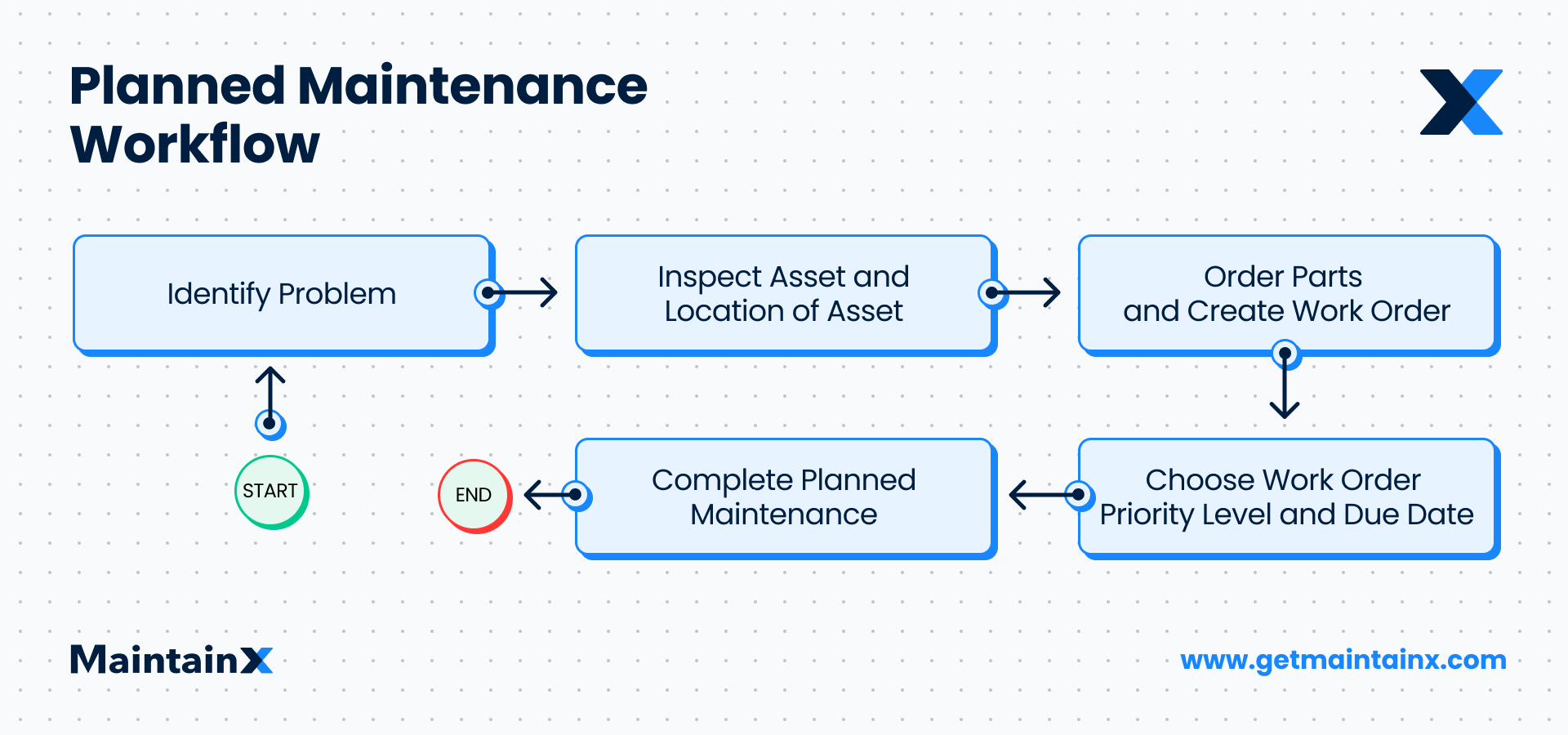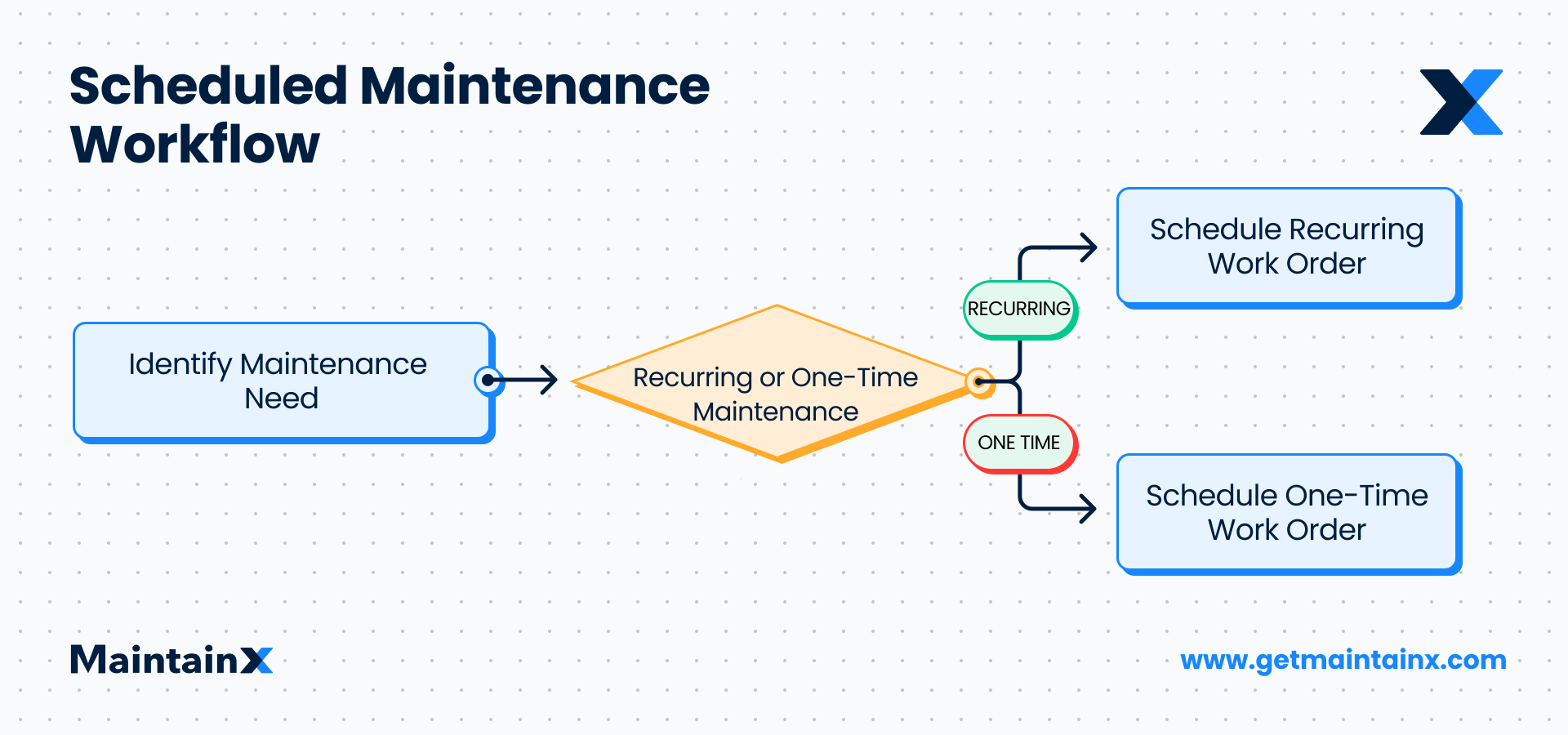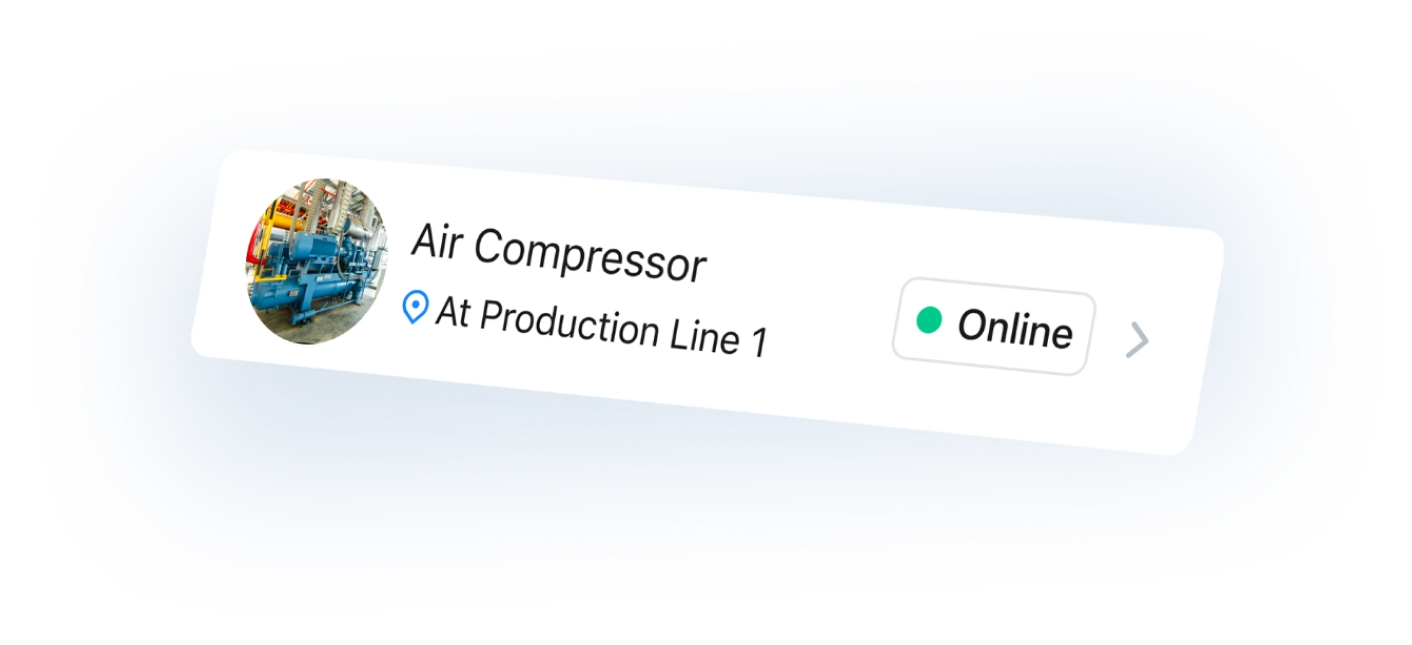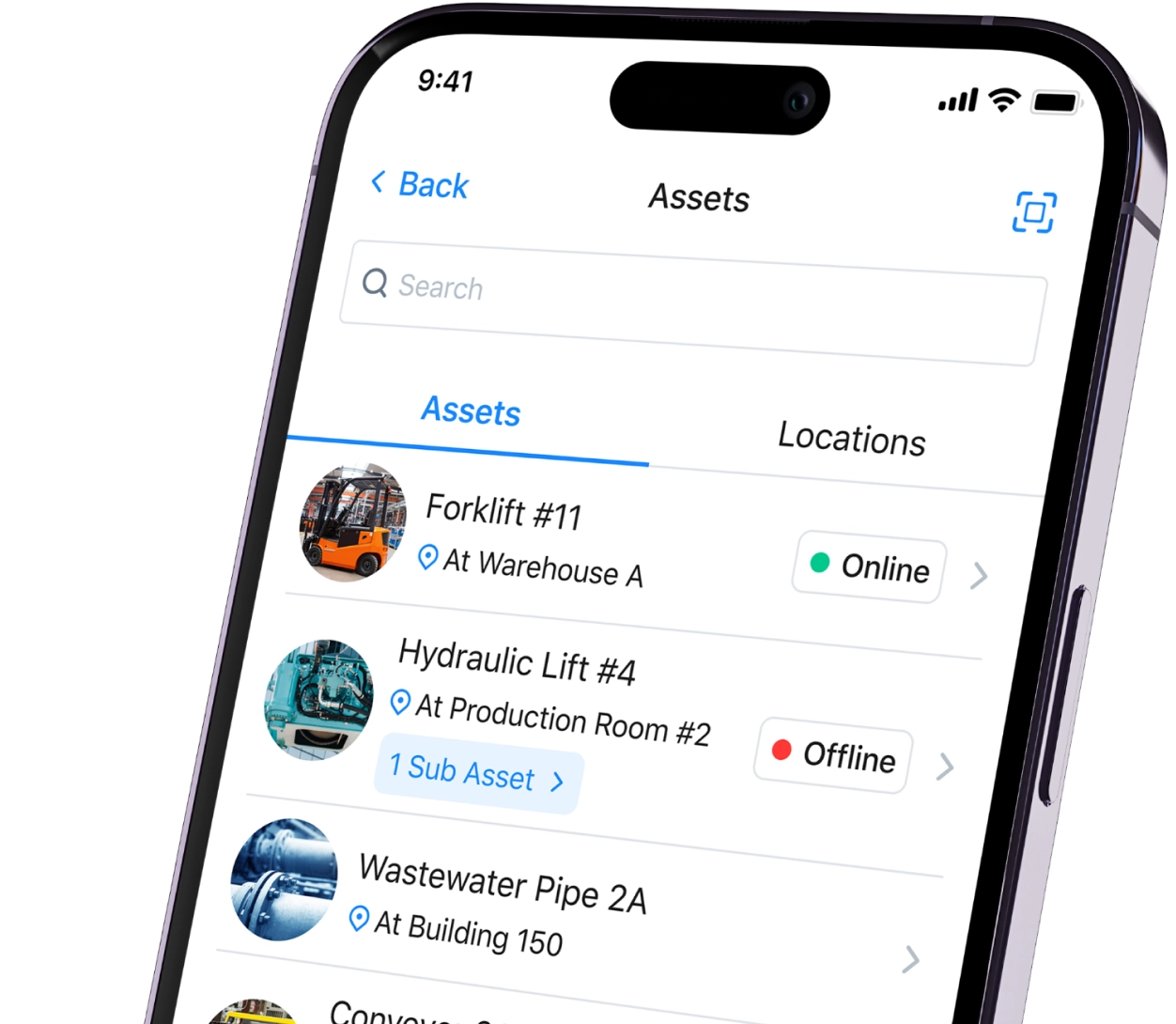Both planned and scheduled maintenance are preventive maintenance (PM) strategies that involve proactive activities. The two maintenance methodologies complement each other, with scheduled maintenance picking up where planned maintenance ends. However, despite their overarching similarities, they are not the same.
Key takeaways
- Planned preventive maintenance defines what tasks need to be done and how they should be executed. Scheduled maintenance determines who will perform them and when.
- Planned preventive maintenance and scheduled maintenance don’t work in isolation. Planning ensures resources and procedures are ready, while scheduling guarantees timely execution.
- Together, planned preventive maintenance and scheduled maintenance reduce downtime, cut costs, extend asset lifespan, and improve safety.
What is planned maintenance?
Planned maintenance refers to a maintenance process that details which resources will be needed to solve a particular equipment malfunction. The goal is to determine which tasks will be completed and how they will be completed.
The process of planning maintenance involves identifying potential equipment issues, outlining steps required for upkeep, and procuring necessary tools and parts for execution. Equipment inspections, process descriptions, ordering replacement parts, and work prioritization make up the planning process of planned maintenance and are overseen by a maintenance planner.

What is an example of planned maintenance?
One example of planned preventive maintenance is routine fleet servicing. A fleet manager assesses the various routine maintenance activities needed to extend the vehicles’ lifespan and creates standard operating procedures (SOPs) for technicians to follow according to recommendations. This type of proactive planned maintenance helps fleet managers avoid unexpected breakdowns, manage repair costs, and extend the life of vehicle assets.
What is scheduled maintenance?
Scheduled maintenance takes defined tasks and assigns them to a specific time and person to ensure they are completed efficiently. The goal of scheduled maintenance is to ensure that resources are available and work is completed within a given timeframe.
On the other hand, scheduled maintenance refers to a maintenance process that details who will complete maintenance tasks and when. It focuses on when planned maintenance tasks will be completed and by whom. The goal is to ensure all maintenance activities are completed within a given timeframe.
Work orders can be scheduled via paper, spreadsheets, or CMMS maintenance software. Scheduled maintenance is completed at repeated intervals according to the manufacturer’s recommendations or per work requests.

What is an example of scheduled maintenance?
The fleet manager schedules recurring work orders based on time and/or usage intervals. For example, every 3,000 miles, or 3 months, vehicles undergo engine oil changes.
Two sides of the same coin
Planned preventive maintenance and scheduled maintenance are two parts of the same strategy. One is about preparation, the other about timing. Planning without scheduling leaves work undefined in the calendar, which can still lead to downtime if tasks aren’t assigned or prioritized. Likewise, scheduling without proper planning risks inefficiency or incomplete repairs. Effective maintenance requires both steps working together.
Reliable Plant recommends that at least 90 percent of maintenance activities be planned maintenance. Conversely, scheduled maintenance without proper planning results in shoddy workmanship due to a lack of the necessary materials, work tools, and documentation.
The benefits of planned and scheduled maintenance
The benefits of planned preventive maintenance and scheduled maintenance include:
- Reduced Downtimes: When maintenance tasks are planned and scheduled, small problems can be taken care of before they develop into major issues or equipment failures. Planned and scheduled maintenance allows maintenance teams to gather data and prioritize work orders depending on their urgency.
- Reduced Maintenance Costs: For critical assets, the more they deteriorate the more expensive it becomes to repair or replace them. Planning and scheduling maintenance tasks in the initial stages of a problem significantly lower the maintenance costs.
- Improved Asset Lifespan: If you keep an asset in good working condition, it will be able to serve you for a longer period of time. Proper maintenance extends the lifespan of an asset.
- Reduced Liability: When assets are in good condition, workplace safety is improved, and you don’t have to worry about paying liabilities for workplace disasters.
- Improved Workplace Culture: Reduced downtime means more engaged employees and positive workplace culture. It also makes collaboration among different teams much easier.
Planned preventive maintenance vs. scheduled maintenance: Quick comparison
The table below compares planned and scheduled maintenance:
Five ways to implement planned and scheduled maintenance effectively
Implementing planned preventive maintenance alongside scheduled maintenance is essential for reducing downtime, extending asset life, and lowering costs. Here are five strategies:
- Build a complete asset inventory: Start by documenting all critical equipment, manufacturer recommendations, and maintenance histories. Use a CMMS to centralize this data, making it easy to plan tasks and set priorities.
- Standardize maintenance procedures: Create checklists and SOPs so technicians know exactly what steps to follow. Attach digital checklists to work orders to ensure consistency and compliance.
- Use a CMMS for scheduling: Assign tasks, set due dates, and track completion in your CMMS. Many platforms allow you to automate recurring PM tasks and send mobile notifications to technicians.
- Track KPIs and adjust schedules: Monitor metrics such as PM compliance, mean time between failures (MTBF), and work order backlog. Benchmarking this data will enable you to create more actionable reports and adjust schedules accordingly.
- Facilitate team communication: Planned and scheduled maintenance fails without clear communication. Use chat, photo uploads, and instant messaging to keep everyone aligned in the field.
By combining structured planning with smart scheduling and leveraging a user-friendly CMMS, organizations can minimize downtime, control costs, and foster a proactive maintenance culture.
Read more about creating a preventive maintenance plan in our blog.
Putting planned and scheduled maintenance into practice
High-performing maintenance teams place all critical assets on PM schedules to reduce downtime, cut extraneous costs, and extend asset longevity. When evaluating planned vs. scheduled maintenance, keep in mind that they are two sides of the same PM maintenance coin.
FAQs
Preventive maintenance is a form of planned maintenance. Once PM tasks are identified based on time or equipment usage, planned maintenance organizes the resources needed and prioritizes work orders for their effective completion.
Planned maintenance can reduce unplanned downtimes and save organizations from the high costs associated with emergency maintenance. The best way to plan and schedule maintenance is with a user-friendly computerized maintenance management system (CMMS) platform. The software enables users to create, assign, and track work orders; keep track of inventory; and monitor key performance indicators (KPIs) that allow for better maintenance decision-making.
Yes. Scheduled preventive maintenance reduces downtime by identifying and fixing small issues before they cause breakdowns. This proactive approach keeps assets running longer, improves reliability, and lowers repair costs compared to reactive fixes.
To create a planned maintenance schedule, start with an asset list and OEM recommendations. Define tasks, tools, and parts needed, then use a CMMS to generate work orders, assign responsibility, set timelines, and track results. Adjust schedules based on asset performance.
Preventive maintenance scheduling depends on manufacturer guidelines, usage hours, and operating conditions. Common intervals include weekly, monthly, or annual checks, while heavy-use assets may require more frequent service. Use OEM guidance first, then refine based on equipment history and data trends.
See MaintainX in action




